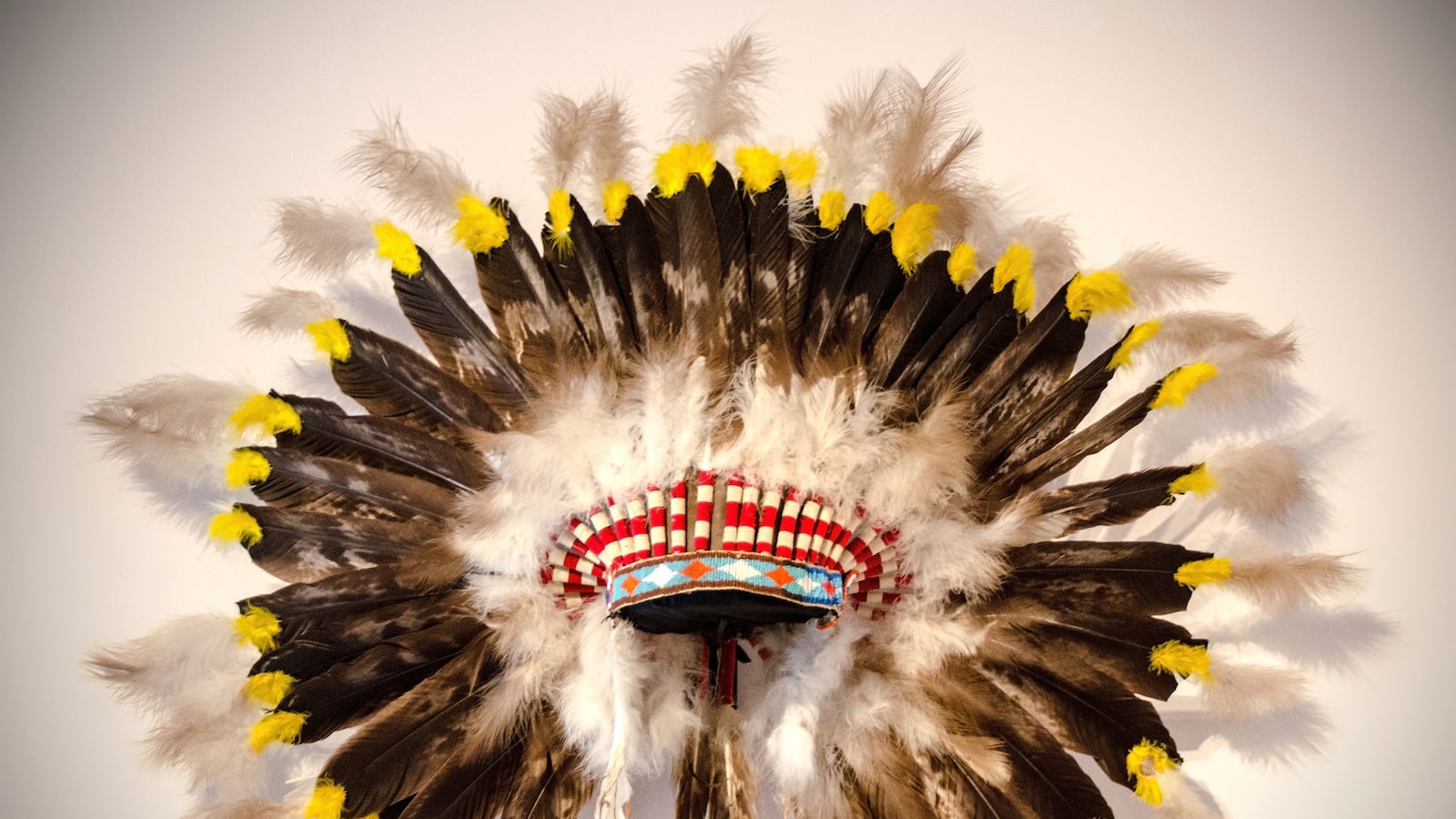When Dartmouth proudly announced its new Native American Program director, Susan Taffe Reed, it did not expect to find itself at odds with Native Americans across the country, faced with the accusation of hiring a member of a “fake Indian tribe.” After weeks of controversy, the college announced on October 1 that Taffe Reed was no longer the director.
Taffe Reed is the president of the Eastern Delaware Nation, Inc., a nonprofit founded by her grandfather, Thomas Taffe, who claimed to be the descendent of Delaware Indians (who hid out in Pennsylvania by passing as white people for 200 years). However, the Native American blog FakeIndians published research on Taffe’s genealogy, claiming he was the grandson of recent Irish immigrants. The federally recognized Delaware tribes, which were removed from their homelands in Pennsylvania 200 years ago, do not recognize the nonprofit to be a legitimate unrecognized Delaware tribe.
Dartmouth’s Native American Program boasts one of the highest graduation rates of Native American students (81.1 percent) and is by far one of the oldest and largest in the country. The NAP director is often the first person Native American students turn to on campus to find social support, direction, and an ally in the administration.
“My tribe was not federally recognized until recently,” said Michelle Leonard, a Shinnecock member and former director of the Urban Indian Center of Philadelphia. She often found herself at odds with the Taffe family in the 1990s. “If it meant you would understand the definitions and dichotomies that are involved, I would give up my recognition so that fakes like them are not recognized.”
Professor Bruce Duthu, who chaired the search committee and is, himself, a member of unrecognized tribe the Houma of Louisiana, noted in his only statement so far to the media:
“In the case of Native peoples (and other people of color), state records, including birth and death certificates, are notoriously unreliable sources of information about personal background. Likewise, there are serious problems with reliance on notions of “federal recognition” as a measure of “authenticity” since the standards for such recognition have been widely and consistently criticized by Native and non-Native scholars and activists alike ever since they were promulgated in 1978.”
The question that arises is, is it even possible to tell the difference between the two—a real tribe that is politically unrecognized and a fake tribe composed of “pretendians” and “wannabes”? Native American scholars and tribal members who spoke to The Daily Beast repeatedly spoke of the importance of documentation in proving the persistence of tribal nations.
Keely Squirrel Denning, a Shawnee tribal genealogist who conducted the research on Taffe Reed for FakeIndians, responded to Duthu’s statement, saying, “No true researcher ever relies upon just one record.”
She examined more than just Taffe family death records. Census lists also show that the Taffe family listed Irish birthplaces, and all documentation supports their claims to recent Irish ancestry. In contrast, Denning examines Duthu’s family documentation, which, despite his tribe’s unrecognized status, clearly and consistently identifies his ancestors as Indian.
Dr. Nicky Michael, councilwoman of the federally recognized tribe the Delaware Tribe of Indians of Oklahoma, concurs: “There is an inherent culture [in a genuine, unrecognized tribe], they don’t have to go to someone else’s tribe, they don’t have to steal. That’s the difference. That’s how you can tell. It’s inherent already. The Nanticoke [in New Jersey] do have Native blood and are real. They don’t know their culture so they ask permission to study our culture. That’s the correct way to do it.”
Political recognition by the United States is possible even for first-contact tribes that have languished for centuries without it. On July 2, Pocahontas’s tribe, the Pamunkey, finally received federal recognition that will take effect this week. Kevin Washburn, assistant secretary for Indian Affairs, told The Washington Post that the tribe “submitted a petition that is frankly one of the most well-documented petitions we’ve ever received.”
The Bureau of Indian Affairs found that the Pamunkey met all the criteria for federal recognition, which includes: 1) demonstrating the tribe comprises a distinct community that has existed from historical times to the present day; 2) retaining political influence over its members; 3) maintaining a governing document; 4) and proving that current members descend from a historic tribe.
Ironically, the tribe’s website already has a disclaimer that an “individual known and/or self-proclaimed as Crown Prince Emperor El Bey Bigbay (or other variations of this name) and also known as William McRae, is not associated in any manner with the Pamunkey Indian Tribe/Nation nor the Pamunkey Tribal Government, despite statements made by this individual and/or others, either spoken or written, to include the Facebook identity, ‘Pamunkey Nation.’”
Kerry Holton, the president of the Delaware Nation of Oklahoma (which is federally recognized), told The Daily Beast, “Dartmouth’s original announcement, which praised Taffe Reed for her ‘leadership roles in her Delaware tribal community,’ was misleading,” because they equated her experience with EDN, a nonprofit, with that of working in an actual Native American nation.
Holton told The Daily Beast, “This whole situation goes to the heart of that matter: tribal sovereignty. Cultural and sovereignty appropriation. We didn’t leave anyone behind. The Delaware signed 48 treaties with the United States and migrated further than another tribe. In our treaties, if any Indian didn’t want to move, you surrendered your Indian identity and became a U.S. citizen.”
He also pointed out that state recognition does not always include the same criteria as federal recognition and in some cases, requires no documentation at all. Holton notes that in one case, a governor signed “a resolution to acknowledge this was supposedly a tribe,” but admitted he knew nothing about the claimant group.
The Cherokee Nation has compiled a list of 212 fake Cherokee tribes across the country and passed a joint “Resolution Opposing Fabricated Cherokee ‘Tribes’ and ‘Indians’” in 2008. The Cherokee have also joined together with the Delaware and the Shawnee to fight the recognition of a “fake tribe” in Illinois (HB 3217). The tribe addressed concerns with state recognition: “The Federal Recognition Process requires extensive documentation, including verification of continuous existence as an Indian tribe since 1900… States do not have such a relationship. Historically and legally, states have been excluded from dealing with Indian nations. The foundation for state exclusion is rooted in the Constitution of the United States, effectively making state recognition unconstitutional.”
And these pretender groups are using any form of state recognition to push for more of a seat at the table. Some have even pushed for the rights to Native American remains and artifacts. This is particularly painful to tribes likes the Delaware, who have been removed from their homelands. To fight this, the Delaware tribes have opened two NAGPRA (Native American Graves Protection and Repatriation Act) offices in Pennsylvania.
“This is happening to so many tribes. They find this artifact and they don’t know what it means and I don’t tell them,” says Michael, who wrote her doctoral thesis on Delaware culture and removal. “I feel it is not any of their business—it’s not their ancestors. And I struggle. I would like to teach, but when we open ourselves up to not just appropriation but bastardization of our culture. That is what Susan Taffe Reed is doing.”
Ben Barnes, a Shawnee leader who has been battling fake tribes in Ohio, has thought a lot about what motivates these “culture vultures.” “A friend who teaches psychology in a college said it is probably either unconscious or conscious lying,” Barnes says.
He also makes a correlation to the American practice of Native mascotry, a practice as American as apple pie. “It’s all tied together with [the] mascot... that noble savage narrative. This appropriation undercuts what a tribe is. A tribe is a sovereign nation and has a sovereign-to-sovereign relationship with other nations.”
“The depth and energy it takes for them to perpetuate this falsehood is beyond reasoning.” Leonard says, “It’s hurt those who need that legitimacy. Look at how long it took the Pamunkeys to get recognition.”
Holton believes that tribes should play a role in, and perhaps even develop their own system of, recognizing federally unrecognized tribes. When he and Michael spoke to Dartmouth Vice Provost Inge-Lise Ameer last week, they asked if the college had considered calling the Delaware Tribe. Michael said Ameer sounded taken aback and admitted she had not.
The Delaware tribal leaders were told they would hear back from Dartmouth last Friday with the college’s decision about what they will do in this hiring debacle. However, the college did not call. Shawnee leader Barnes (his tribe is also listed on EDN’s site as one of 12 tribes they represent) called Dartmouth on Monday and was told an announcement would be coming midweek.
Michael believes that if Dartmouth had better communications in place with actual tribes they could have avoided this debacle altogether. And now that they are searching again for a Native American Program director, her advice is: “Hire a real Delaware!”





